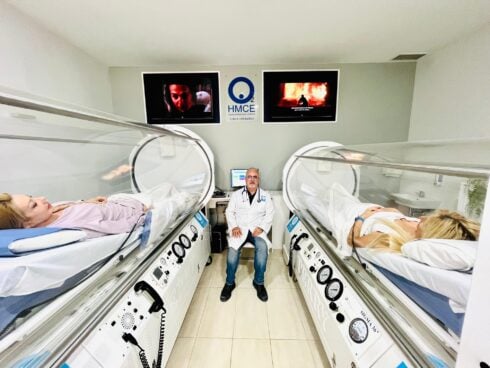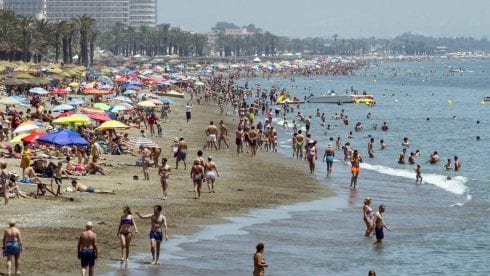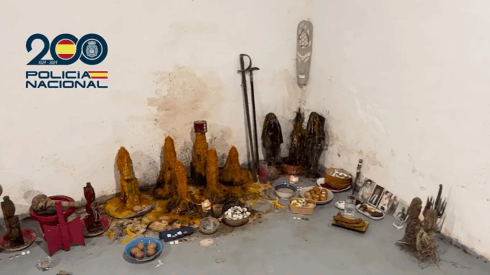IF Spain lifts the World Cup trophy aloft next month the players and manager will almost certainly receive all the plaudits.
Yet, while the likes of Fernando Torres and Cesc Fabregas enjoy the adulation, spare a thought for the Britons who originally brought the game to Spain more than 100 years ago.
For, as football aficionado and writer Richard Brentnall reveals, these southern shores owe its football hegemony to a group of hardy British miners who came to work in Andalucia in the 19th Century.
It all began back in 1873 when a British consortium bought the mineral-rich mines of Rio Tinto, in Huelva.
Spawning the now multinational company known as Rio Tinto, this purchase heralded the influx of British workers.
As Brentnall explains, although it would be romantic to imagine English gentleman bestowing upon locals a new prosperity, the reality was rather different.
The British-dominated syndicate, made no bones about dynamiting an entire village which stood in the way of its sought-after mines.
Indeed, the residential quarters barred native mineworkers and Britons were discouraged from having any liaisons with Spanish women.
However, the immigrants did, fortunately, choose to share one cultural trait, their love of the beautiful game.
“Marched out from Huelva on Wednesday and played football with some railway workers. The only diversion we truly had.”
Already established as a sport in their native climes, the labourers would organise football matches every Saturday afternoon.
Incredibly, the first written account of football in Spain was made in a guestbook at an inn in Gaucin.
In September 1874 Captain W F Adams had written: “Marched out from Huelva on Wednesday and played football with some railway workers. The only diversion we truly had.”
Some 15 years later, the popular doctor in charge of assessing the miners’ health decided it was time that an official team was created.
The well-liked Scotsman and medic Alexander MacKay, fearful of the detrimental health effects a lifetime in the mines could have, flexed his social muscles to get the ball rolling.
And with the help of influential city engineer Guillermo Sundheim, Spain’s first football team, Huelva Recreation Club was born on December 23 1889.
Another Briton, Charles Adams, became the club’s first-ever chairman and just one year later, the team, boasting just two Spaniards, set off for Sevilla to play Spain’s first officially-recorded football match.
The sport rapidly grew in popularity among Spaniards living in the area and, in 1903, the club’s name was translated to Club Recreativo de Huelva.
The following decade witnessed Recreativo win the Andalucia championship a glorious ten seasons in a row.
They also acquired the nickname Los Decanos, (the Dean, i.e. the oldest one) with respect to its status as Spain’s oldest football club.
As part of his exploration of Spanish football, Brentnall also went on a whistle-stop tour of Andalucia’s leading clubs.
In the book he notes each club’s traditions and samples the match-day atmosphere of regional clubs Sevilla, Malaga and Almeria.
While left cold by the humdrum atmosphere inside Real Madrid’s Bernabeu stadium, Brentnall lavishes praise on the passionate support the region’s finest receive.
For example, a trip to local derby Malaga against Cordoba, stirs the former fanzine writer after witnessing the mutual respect the rival fans had for each other.
In a match that contained two red cards and eight yellows, the opposition supporters still took it in turns to chant the rival teams’ names.
There were no stewards in sight and the fans were trusted to vocally support their team without being told to sit down and be quiet.
Halfway through the match, a jovial fan whipped up the Costa del Sol support by running the whole length of a stand boldly flying a giant flag.
It was harmless fun – reminiscent for Brentnall of a time when English football was less regimented.
What’s more, alongside the hard-core Malaga supporters lay a hub of loyal fans, accepted and cherished by the home faithful – expatriates.
Self deprecatingly calling themselves the Guiris (the foreigners) there are now at least one thousand Britons who regularly visit La Rosaleda stadium to cheer on Los Boquerones.
So disillusioned with England’s money-obsessed Premier League, Brentnall found himself galvanised once more by the game he loved here in Spain and, above all, in Andalucia.
Fans were allowed to be fans inside the stadium and families didn’t have to fork out half a week’s wages to watch their favourite team.
Not obsessed by signing unknown overseas footballers, Spain’s top division still boasts a high number of home-grown starlets.
While England struggles to regularly produce talent on a yearly basis, the Spanish league is accustomed to welcoming its latest high-profile ace.
And, for many, this depth of talent is why current European Champions Spain are the undisputed favourites to clinch World Cup glory this summer in South Africa.
But just remember it all began with a Scottish doctor and a few British miners 100 years ago in Huelva.
Click here to read more News from The Olive Press.






and the book is called…???
A Different Corner, Exploring Spanish Football
Thanks for providing the link, Karl – I hope it bears fruit!
I’d like to think that my book might appeal to anyone interested in an exploration of Spanish culture through the eyes of a relatively new arrival (I came here to live in March 2007); particularly, though, Spanish football culture.
I’d become peed off big-time by football in England (the murdering of a once-level playing field, bumptious H&S jobsworths in orange anoraks eyeing you as prey on match days), and thus set out to travel the length and breadth of Spain in the hope of having my love of the game resuscitated.
I hope that anyone reading the book will have as much fun as I did in writing it.
Cheers,
Richard
(PS – it can be purchased in Bookworld)
In Aguilas (Murcia), where the Scots were mining in the 1870’s, there is also a claim for Spain’s first ‘campo de fútbol’.
It’s also told around here that the first ‘peña’ in Spain (fan-club) was based in Garrucha from 1903.
Very interesting article Richard. If indeed there is a book, what’s the title and do you have any other details (ie: ISBN, publisher, etc.). Whats the RRP and can you get it in Australia?
A Different Corner: Exploring Spanish Football
Author: Richard Brentnall
Paperback: 196 pages
Publisher: Matador (30 Sep 2009)
Language English
ISBN-10: 1848761457
ISBN-13: 978-1848761452
I recently visited the British Cemetery in Huelva which is overgrown & in a very sorry state. Two of Dr Mackay’s (founder of Huelva Recreativo)children are buried there as well as two airmen (British & Australian) whose plane crashed near there in 1942.
Except that Bretnall doesn’t quote his source – or maybe he does? I’m the source, and I wrote ‘Morbo: The Story of Spanish Football’ in 2001.
I can’t find your email subscription hyperlink or newsletter service.
https://vk.com/page-144028406_54546103